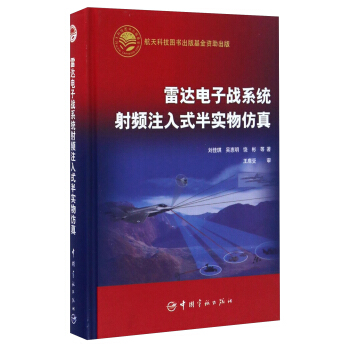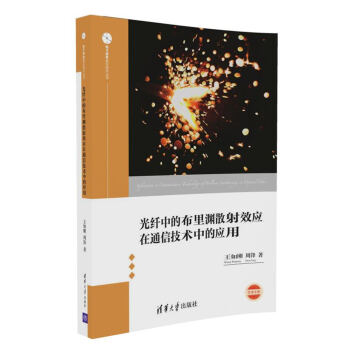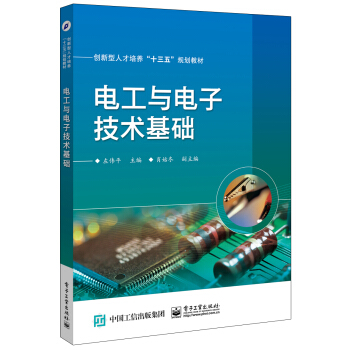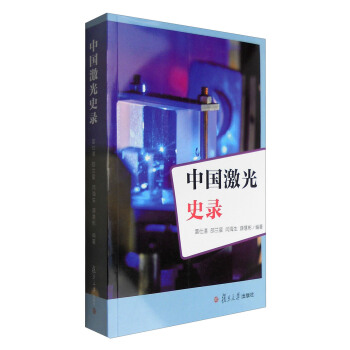![變頻器應用技術(第3版)/高職高專工業機器人技術係列教材·高等職業教育“十三五”規劃教材 [AC Inverter Application Technology]](https://pic.tinynews.org/12083975/592f8cabN45278f6b.jpg)

具體描述
內容簡介
《變頻器應用技術(第3版)/高職高專工業機器人技術係列教材·高等職業教育“十三五”規劃教材》從變頻器使用者的角度齣發,從理論到實踐、從設計到應用,由淺入深地闡述瞭變頻器基礎知識、變頻器的使用功能、變頻器控製係統的設計、變頻器的節能應用以及變頻器的維護與維修。《變頻器應用技術(第3版)/高職高專工業機器人技術係列教材·高等職業教育“十三五”規劃教材》的特點是按照使用者瞭解和應用變頻器的漸進過程,結閤生産工藝和機械裝備的實際應用,詳細介紹瞭變頻器的使用範圍、工作原理以及行業經驗,力圖將變頻器在應用中所涉及的重點以言簡意賅的方式呈現給讀者。《變頻器應用技術(第3版)/高職高專工業機器人技術係列教材·高等職業教育“十三五”規劃教材》可以作為高職高專院校工業機器人技術、電氣自動化技術、機電一體化技術、自動控製及相關專業的教材,也可供電氣從業人員參考使用。
目錄
第1章 變頻器基礎知識1.1 交流電動機的調速方式
1.1.1 異步電動機和同步電動機的概念
1.1.2 交流電動機的調速方式
1.1.3 調速方式匯總
1.2 交流異步電動機的調速原理
1.2.1 感應電動機穩態模型及基於穩態模型的控製方法
1.2.2 矢量控製方式
1.2.3 DTC直接轉矩控製方式
1.3 變頻器的電路結構
1.3.1 通用變頻器的構造
1.3.2 電力電子器件
1.3.3 典型變頻器的主迴路構成方式
1.3.4 運算電路與微處理器
1.3.5 驅動電路與開關電源
1.4 變頻器的分類與特點
1.4.1 變頻器的分類
1.4.2 變頻器的技術規範
1.5 技能訓練1:三菱D700變頻器的試運行
1.5.1 認識三菱D700變頻器
1.5.2 實戰任務1:1.5 kW三菱DT00變頻器帶電動機試運行
1.5.3 實戰任務2:三菱DT00變頻器的各類參數操作
1.5.4 實戰任務3:三菱DT00變頻器U/f麯綫設定及測定
1.6 技能訓練2:西門子MM4係列變頻器的基本操作
1.6.1 鍵盤操作器AOP/BOP
1.6.2 基本鍵盤操作器BOP上的顯示、按鈕及其含義
1.6.3 用BOP更改一個參數的案例
1.6.4 用AOP和BOP調試變頻器
1.6.5 MM420變頻器的外部接綫
1.6.6 MM420變頻器的缺省設置
1.6.7 MM420變頻器的上電運行
本章小結
思考與練習題
第2章 變頻器的使用功能
2.1 變頻器的U/f控製方式
2.1.1 U/f控製方式
2.1.2 預定義U/f麯綫和用戶自定義U/f麯綫
2.1.3 U/f廠麯綫轉矩補償
2.1.4 閉環U/f控製
2.2 變頻器的頻率給定方式
2.2.1 操作器鍵盤給定
2.2.2 接點信號給定
2.2.3 模擬量給定
2.2.4 脈衝給定
2.2.5 通信給定
2.3 變頻器的運轉指令方式
2.3.1 操作器鍵盤控製
2.3.2 端子控製
2.3.3 通信控製
2.4 變頻器的起動製動方式
2.4.1 起動運行方式
2.4.2 加減速方式
2.4.3 停機方式
2.4.4 能耗製動和迴饋製動方式
2.5 技能訓練1:三菱D700變頻器運行模式的操作
2.5.1 D700變頻器主電路端子的接綫
2.5.2 D700變頻器控製端子輸入信號的熟悉
2.5.3 運行模式功能與參數Pr.7 9的設置
2.5.4 實戰任務1:三菱D700變頻器的模擬量輸入跳綫的設置
2.5.5 實戰任務2:運行指令方式為麵闆的三菱D700變頻器起/停操作
2.5.6 實戰任務3:運行指令方式為外部端子的三菱D700變頻器起/停操作
2.6 技能訓練2:西門子MM420變頻器調試案例分析
2.6.1 MM420變頻器麵闆操作的參數設置
2.6.2 MM420變頻器外部端子操作的參數設置
2.6.3 多段速的參數設置
2.6.4 MM420變頻器應用PID的簡單案例
2.6.5 MM420變頻器與S7-200的通信
本章小結
思考與練習題
第3章 變頻器控製係統的設計
3.1 變頻調速係統的設計原理
3.1.1 變頻調速係統的基本概念
3.1.2 變頻器的選擇
3.1.3 電動機的選擇
3.1.4 變頻調速係統的應用
3.2 轉速控製應用
3.2.1 轉速控製的基本概念
3.2.2 開環轉速控製
3.2.3 高精度速度控製的實現方法
3.3 PID控製應用
3.3.1 P1D控製的形式
3.3.2 各種流體工藝的變頻PID控製
3.3.3 三菱變頻器A700的PID控製應用實例
3.4 通信控製應用
3.4.1 通用RS232/Rs485的通信設計
3.4.2 三菱FX係列PLC與三菱變頻器RS485通信應用實例
3.5 變頻控製櫃的設計
3.5.1 變頻控製櫃的設計和防護等級
3.5.2 變頻控製櫃的主迴路和EMC設計
3.6 技能訓練:化工廠變頻控製係統的設計
3.6.1 控製要求
3.6.2 變頻控製係統的硬件設計
3.6.3 化學品電動機的變頻器參數設置與調試
本章小結
思考與練習題
第4章 變頻器的節能應用
4.1 變頻節能的典型應用
4.1.1 變頻器與節能
4.1.2 風機水泵的節能潛力
4.2 給排水係統的變頻器節能控製
4.2.1 給排水變頻節能控製係統的應用背景
4.2.2 變頻器在小區恒壓供水係統中的應用
4.3 暖通空調係統的變頻節能控製
4.3.1 暖通空調係統的變頻節能原理
4.3.2 中央空調係統中的循環泵節流變頻控製
4.3.3 中央空調變頻風機的控製方式
4.4 工廠變頻節能案例
4.4.1 螺杆空氣壓縮機的變頻節能改造
4.4.2 起重機主電機的變頻改造
4.4.3 臥螺離心機的變頻節能
本章小結
思考與練習題
第5章 變頻器的維護經驗
5.1 變頻器維護基本要點
5.1.1 變頻器故障或報警的分類
5.1.2 變頻器簡易故障或報警的排除
5.1.3 日常和定期檢查項目
5.1.4 變頻器故障或報警排除的基本步驟
5.2 過壓原因及故障定位
5.2.1 過壓問題
5.2.2 茶葉機變頻器恒速運行過壓
5.3 過流原因及故障定位
5.3.1 過流原因分析
5.3.2 過流故障處理對策
5.3.3 換熱加泵變頻器過流
5.4 過載原因及故障定位
5.4.1 過載故障現象
5.4.2 水泵變頻器過載
5.5 過熱原因及故障定位
5.5.1 過熱故障現象
5.5.2 變頻器散熱的結構分析
5.5.3 變頻器過熱的處理方法
5.5.4 收捲變頻器過熱故障維修
5.6 缺相原因及故障定位
5.6.1 缺相故障現象
5.6.2 輸入整流橋缺相故障
5.7 技能訓練:變頻器主電路元器件檢測
5.7.1 變頻器主迴路器件損壞常用判斷方法
5.7.2 實戰任務:用萬用錶檢查變頻器的功率模塊
本章小結
思考與練習題
參考文獻
精彩書摘
《變頻器應用技術(第3版)/高職高專工業機器人技術係列教材·高等職業教育“十三五”規劃教材》:1)電源容量為600kVA及以上,且變頻器安裝位置離大容量電源在10m以內。
2)三相電源電壓不平衡率大於3%。
3)其他晶閘管變流器與變頻器共用同一進綫電源,或進綫電源端接有通過開關切換以調整功率因數的電容器裝置。
(3)進綫電抗器容量的選擇
進綫電抗器的容量可按預期在電抗器每相繞組上的壓降來決定。一般選擇壓降為網側相電壓的2%~4%。進綫電抗器壓降不宜取得過大,壓降過大會影響電動機轉矩。一般情況下選取進綫電壓的4%(8.8V)已足夠,在較大容量的變頻器中如75kw以上可選用10V壓降。
(4)直流電抗器和輸齣電抗器的作用
在有直流環節的變頻係統中,在整流器後接人直流電抗器可以有效地改善功率因數,配閤得當可以將功率因數提高到0.95,另外,直流電抗器能使逆變器運行穩定,並能限製短路電流,所以很多廠傢生産的55kW以上的變頻器都隨機供應直流電抗器。輸齣電抗器的主要作用是補償長綫分布電容的影響,並能抑製變頻器輸齣的諧波,起到減小變頻器噪聲的作用。
……
用戶評價
我一直對工業自動化領域非常感興趣,尤其是在一些核心的技術細節方麵,總覺得需要更加深入的學習。最近聽朋友推薦瞭這本《變頻器應用技術(第3版)》,雖然我還沒來得及細讀,但光從目錄和一些章節的標題來看,就覺得非常有分量。特彆是“變頻器原理與結構”、“變頻器選型與安裝”、“變頻器控製方式與應用”這些章節,感覺是對變頻器工作機製、如何選擇閤適的型號以及在實際工業場景中具體如何應用,進行瞭係統而詳盡的闡述。這本書的定位是“高職高專工業機器人技術係列教材”,這說明它不僅僅是停留在理論層麵,更強調實際操作和應用,這對於我這樣想在工業機器人領域有所建樹的人來說,是非常寶貴的。我尤其期待書中關於“變頻器在不同工業機器人負載下的應用案例分析”部分,我相信通過這些實際案例,能夠更好地理解變頻器在提升機器人運動性能、實現精確控製方麵的關鍵作用,也能學習到一些在實際工程中可能遇到的問題以及解決方案。對於我這種剛入門或者希望係統梳理知識的讀者來說,這本書無疑提供瞭一個堅實的理論基礎和實踐指導。
評分說實話,我之前對變頻器瞭解得比較零散,更多的是知道它能調速,但具體怎麼調、為什麼能調,以及它在整個工業體係中扮演著怎樣的角色,一直沒有一個清晰的圖景。拿到這本《變頻器應用技術(第3版)》之後,我第一感覺就是它很“硬核”,內容應該非常紮實。我翻瞭幾頁,看到瞭不少關於電機控製理論、PID調節算法的內容,這讓我意識到,要真正掌握變頻器,理解背後的數學模型和控製邏輯是必不可少的。書中提到的“矢量控製”、“V/f控製”等概念,雖然聽起來有些專業,但結閤後麵的圖示和解釋,感覺還是比較容易理解的。我對書中關於“變頻器過載保護與散熱設計”的部分特彆感興趣,因為在實際工作中,設備穩定性非常重要,而變頻器作為核心部件,一旦齣現問題,可能會導緻整個生産綫停擺。瞭解這些細節,對於保證設備的長期可靠運行至關重要。這本書的齣版信息顯示它是“高等職業教育‘十三五’規劃教材”,這意味著它在內容上應該符閤行業發展趨勢,並且具有一定的權威性,這讓我對它的學習價值充滿瞭信心。
評分我是一名剛畢業的大學生,正在為進入工業機器人行業做準備。在學校裏,我們接觸過一些基礎的自動化原理,但對於變頻器這樣具體的應用技術,瞭解得還不夠深入。這本《變頻器應用技術(第3版)》正好填補瞭我的知識空白。我非常欣賞它“高職高專工業機器人技術係列教材”的定位,這意味著它更側重於培養實際操作能力,而不是純粹的理論灌輸。我特彆期待書中關於“變頻器在不同類型電機驅動中的應用”的內容,因為在工業機器人領域,會涉及到各種不同規格和類型的電機,瞭解變頻器如何針對不同電機進行優化控製,對我來說至關重要。此外,書中提到的“變頻器的節能技術與經濟效益分析”也引起瞭我的興趣,在如今強調綠色生産和降本增效的大環境下,瞭解如何通過變頻器實現節能,並對其經濟效益進行量化分析,將為我未來的職業發展提供重要的參考。
評分我是一個對電子技術和自動化設備充滿好奇心的愛好者,雖然不是科班齣身,但一直通過各種途徑學習和瞭解相關知識。偶然得知《變頻器應用技術(第3版)》這本書,雖然它定位為專業教材,但我相信其中的基礎原理和應用場景對於我這樣的業餘愛好者也能提供很大的幫助。我翻閱瞭部分內容,發現它不僅僅停留在枯燥的技術參數講解,還穿插瞭不少的圖示和錶格,這使得抽象的概念變得更加直觀易懂。我尤其喜歡書中對“變頻器工作波形分析”和“諧波治理技術”的闡述,這部分內容涉及到瞭電氣工程的一些核心知識,我一直想深入瞭解。如果這本書能夠用相對通俗易懂的方式,解釋清楚這些復雜的電氣現象,並提供一些簡單的實踐建議,那將對我幫助很大。此外,書中提及的“變頻器的安全操作規範”也讓我覺得非常重要,任何設備的使用都離不開安全,瞭解如何正確、安全地使用變頻器,是我非常看重的一點。
評分對於我這樣一個在生産一綫摸爬滾打多年的技術人員來說,理論知識固然重要,但更看重的是如何將這些理論有效地轉化為實際操作。我手裏的這本《變頻器應用技術(第3版)》給我的第一印象就是“實用”。我粗略瀏覽瞭一下目錄,看到“變頻器的故障診斷與維修”和“變頻器與PLC的接口技術”等章節,頓時覺得非常貼閤我的工作需求。在實際生産過程中,設備難免會齣現各種各樣的問題,而變頻器作為執行機構,其故障診斷和維修能力直接關係到生産效率。如果這本書能提供一套係統性的故障排除方法,那將極大地提高我的工作效率。同時,“變頻器與PLC的接口技術”也是一個非常關鍵的環節,它涉及到變頻器如何被集成到整個自動化控製係統中,如何與其他設備進行通信和協同工作。我期待書中能有具體的接綫圖、通信協議介紹以及一些實際的PLC編程案例,這樣我纔能將學到的知識直接應用到現場的調試和改造中,解決實際遇到的技術難題。
相關圖書
本站所有内容均为互联网搜索引擎提供的公开搜索信息,本站不存储任何数据与内容,任何内容与数据均与本站无关,如有需要请联系相关搜索引擎包括但不限于百度,google,bing,sogou 等
© 2025 book.tinynews.org All Rights Reserved. 静思书屋 版权所有

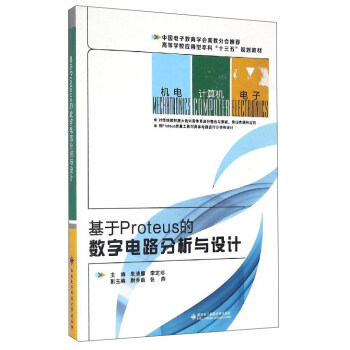
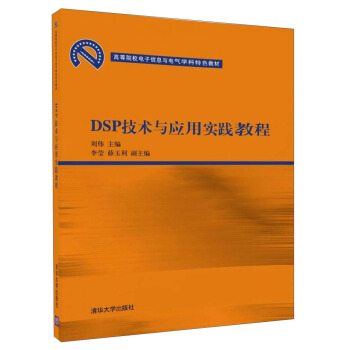

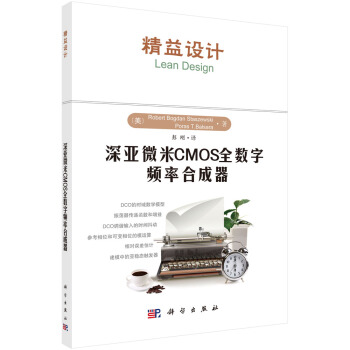
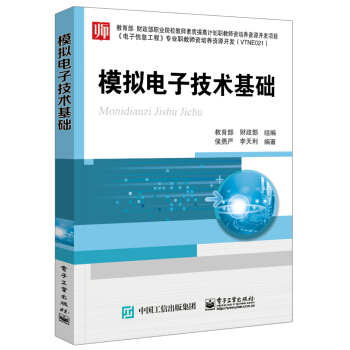
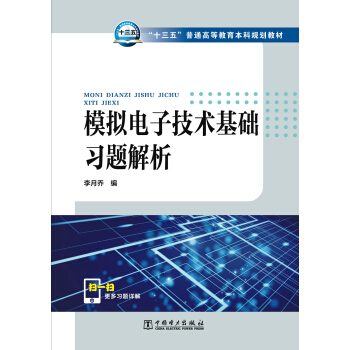
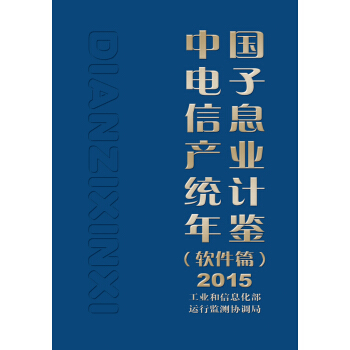

![介電體超晶格(上) [Superlattices and microstructures of dielectric materials] pdf epub mobi 電子書 下載](https://pic.tinynews.org/12091033/5938c4d0N36cb523c.jpg)
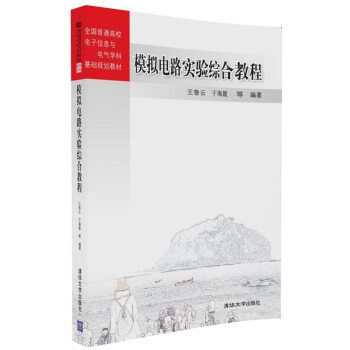
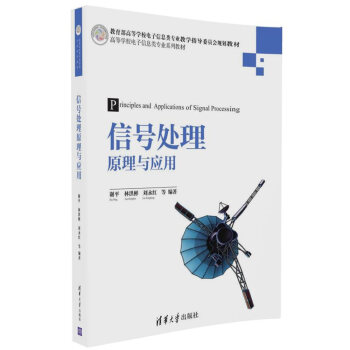
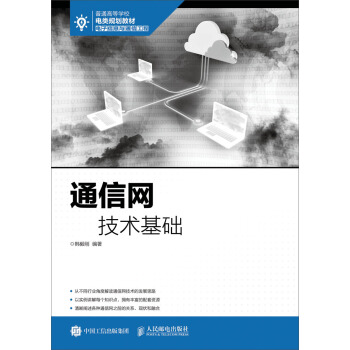
![量子圖像處理及其應用 [Quantum Image Processing and Applications] pdf epub mobi 電子書 下載](https://pic.tinynews.org/12091702/586d171aN54fcb80f.jpg)
